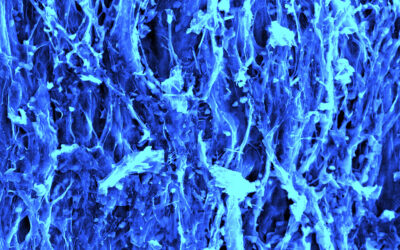Usually, energy storage is associated with batteries. However, in laptops, cameras, cellphones or vehicles, high energy density supercapacitors are increasingly replacing the older technology. Unlike batteries they can quickly store large amounts of energy and deliver it just as fast. For example, supercapacitors could theoretically store the energy provided by a braking train and provide it again fast enough to allow the train to start moving.
However, one problem with supercapacitors to date has been their lack of energy density. While lithium batteries reach an energy density of up to 265 Kilowatt hours (KW/h), supercapacitors thus far have only been delivering a tenth of that.
Hybrid material provides high performance
A team lead by Prof. Roland Fischer from the Technical University of Munich has now developed a novel, powerful material which can serve as the positive electrode in a supercapacitor. The researchers combine it with a proven negative electrode based on titanium and carbon.
The team used hybrid materials to endow their electrode with optimum properties. “Nature is full of highly complex, evolutionarily optimized hybrid materials – bones and teeth are examples. Their mechanical properties, such as hardness and elasticity were optimized through the combination of various materials by nature,” says Fischer.
In this case, graphene acid was chemically bound to molecular organic frameworks (MOFs). This endowed the material with a large specific surface, controllable pore sizes and high electrical conductivity. “The high performance capabilities of the material is based on the combination of the microporous MOFs with the conductive graphene acid,” explains first author Jayaramulu Kolleboyina.
Powerful and stable
A large surface is important for high energy density supercapacitors. It allows for the collection of a large number of charge carriers within the material – this is the basic principle for the storage of electrical energy. The new material has a massive inner surface of up to 900 square meters per gram.
However, that is not the only advantage of the new material. To achieve a chemically stable hybrid, one needs strong chemical bonds between the components. The team again found inspiration in nature when planning the chemistry, “In fact, we have connected the graphene acid with a MOF-amino acid, which creates a type of peptide bond.” says Fischer.
The stable connection between the nano-structured components has huge advantages in terms of long term stability: The more stable the bonds, the more charging and discharging cycles are possible without significant performance impairment.
International network of experts
Fischer emphasizes how important the unfettered international cooperation between researchers was when it came to the development of the new supercapacitor. Kolleboyina was originally in Munich as a guest scientist from India, and played a key role in building the international team.
“Our team also networked with electro-chemistry and battery research experts in Barcelona as well as graphene derivate experts from the Czech Republic,” reports Fischer. “Furthermore, we have integrated partners from the USA and Australia. This wonderful, international co-operation promises much for the future.”
Reference: K. Jayaramulu et al. Covalent Graphene-MOF Hybrids for High-Performance Asymmetric Supercapacitors, Adv. Mat. (2020) DOI: 10.1002/adma.202004560
Press release provided by the Technical University of Munich

















